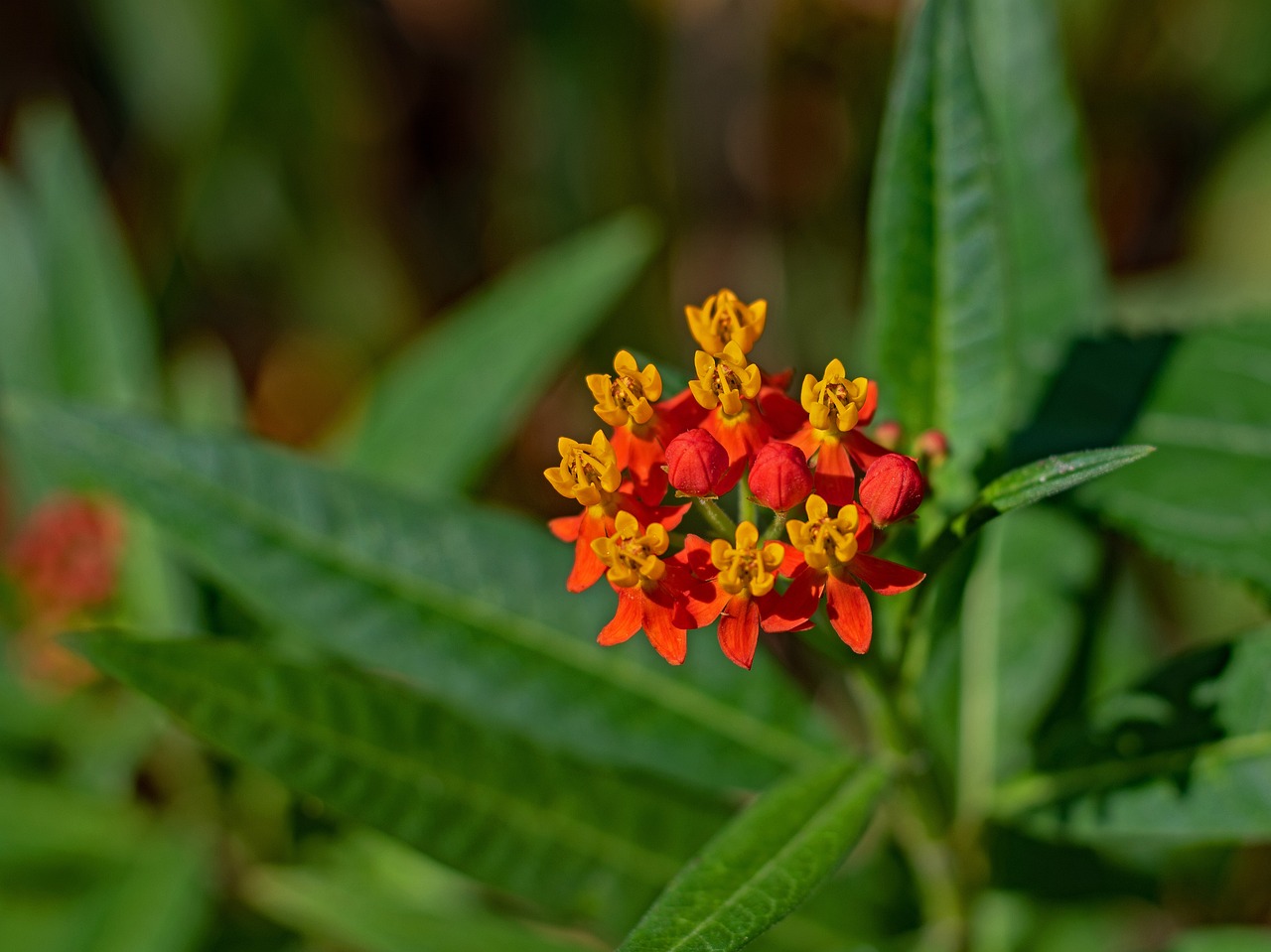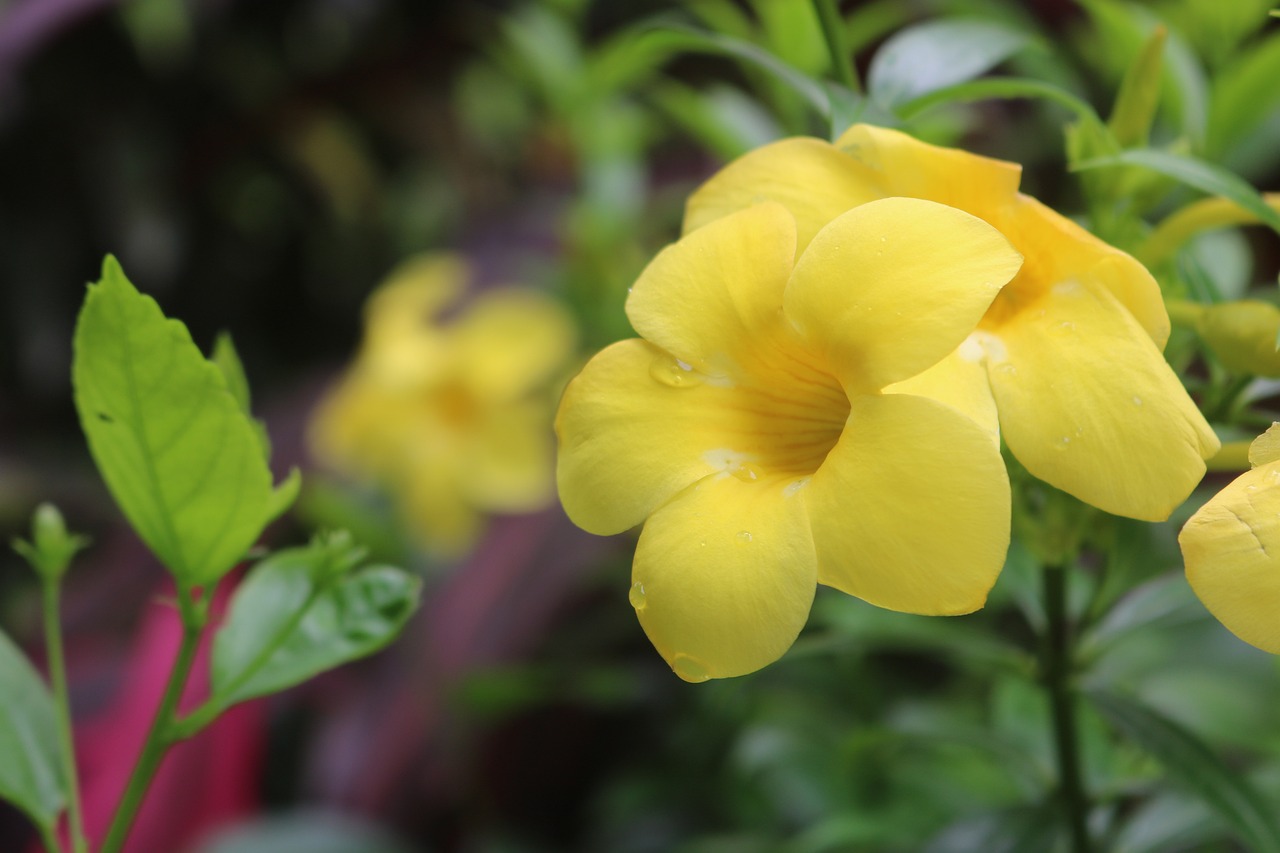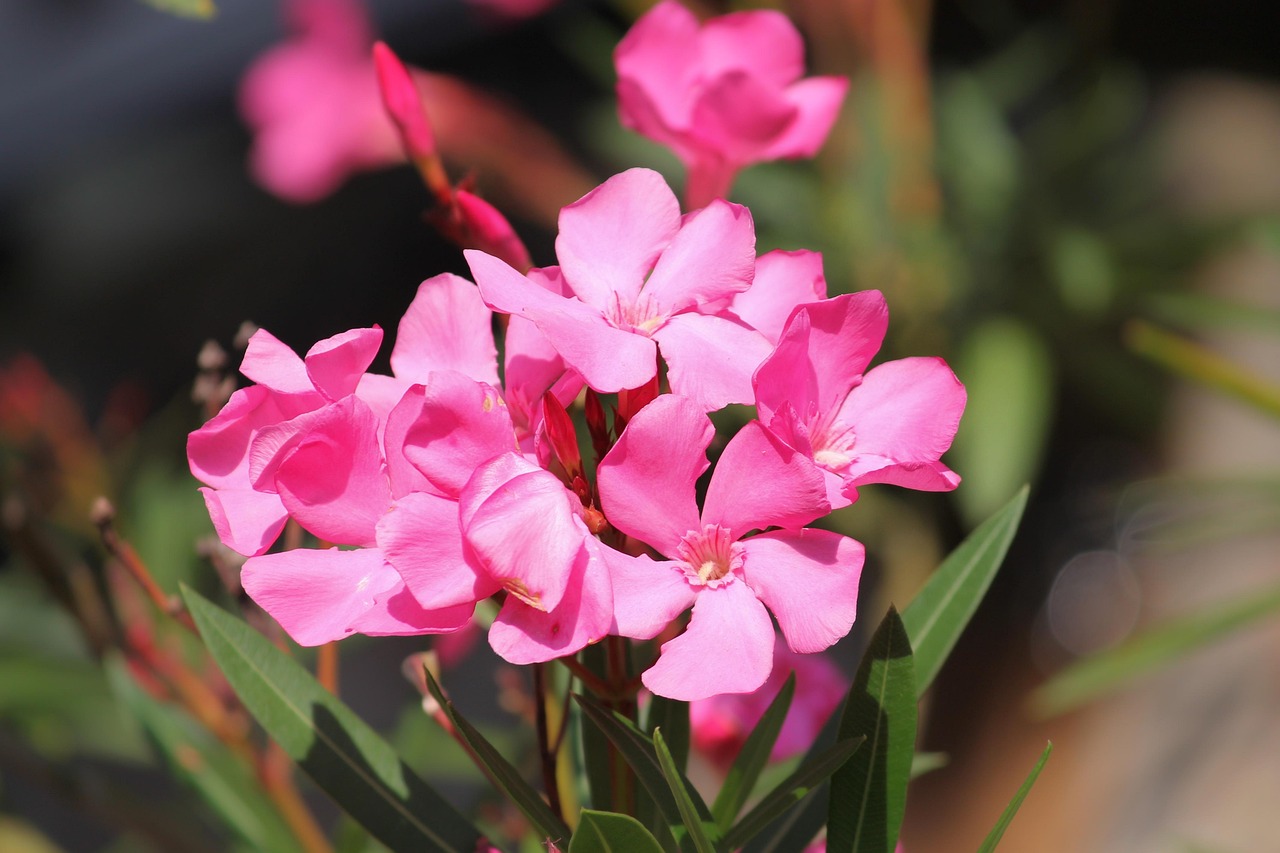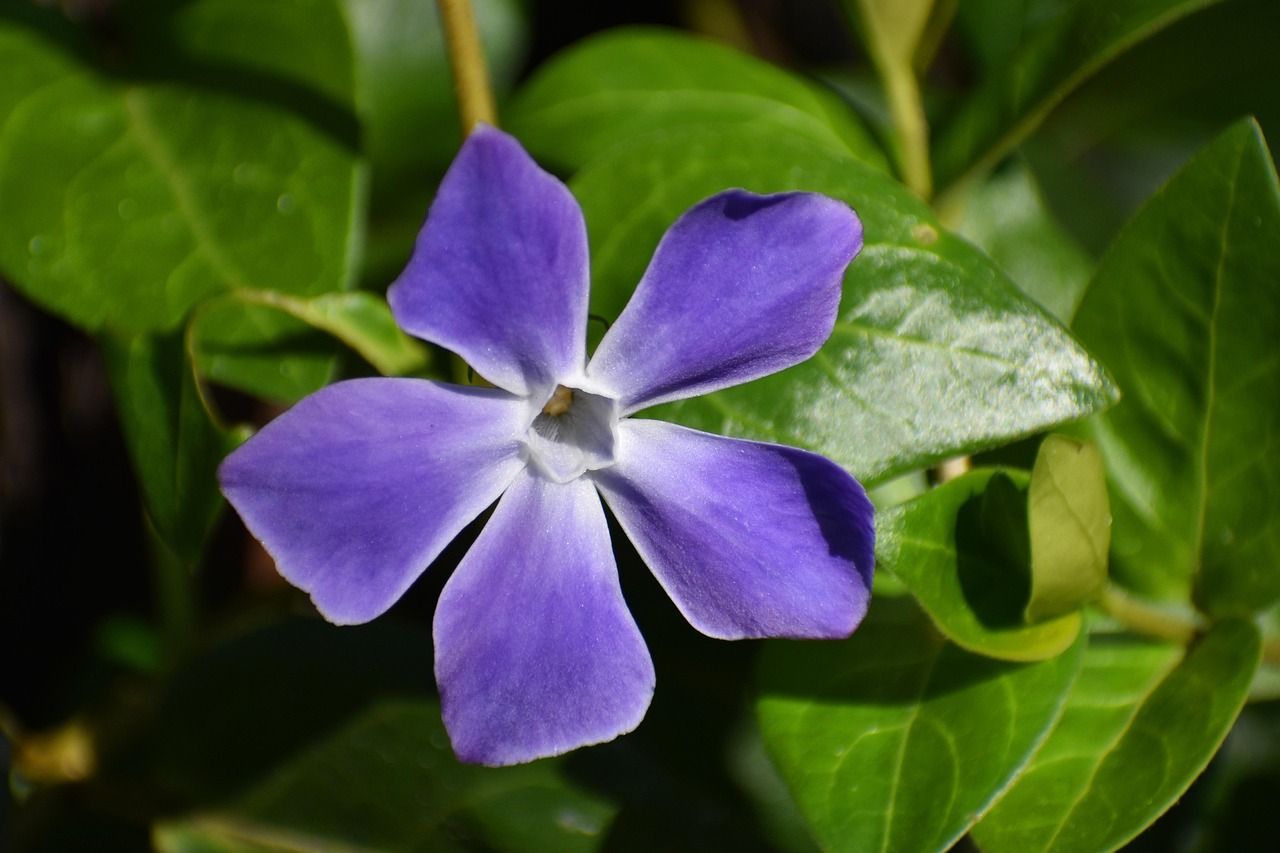Mandevilla | An Exotic Flower that Adorned South American Gardens
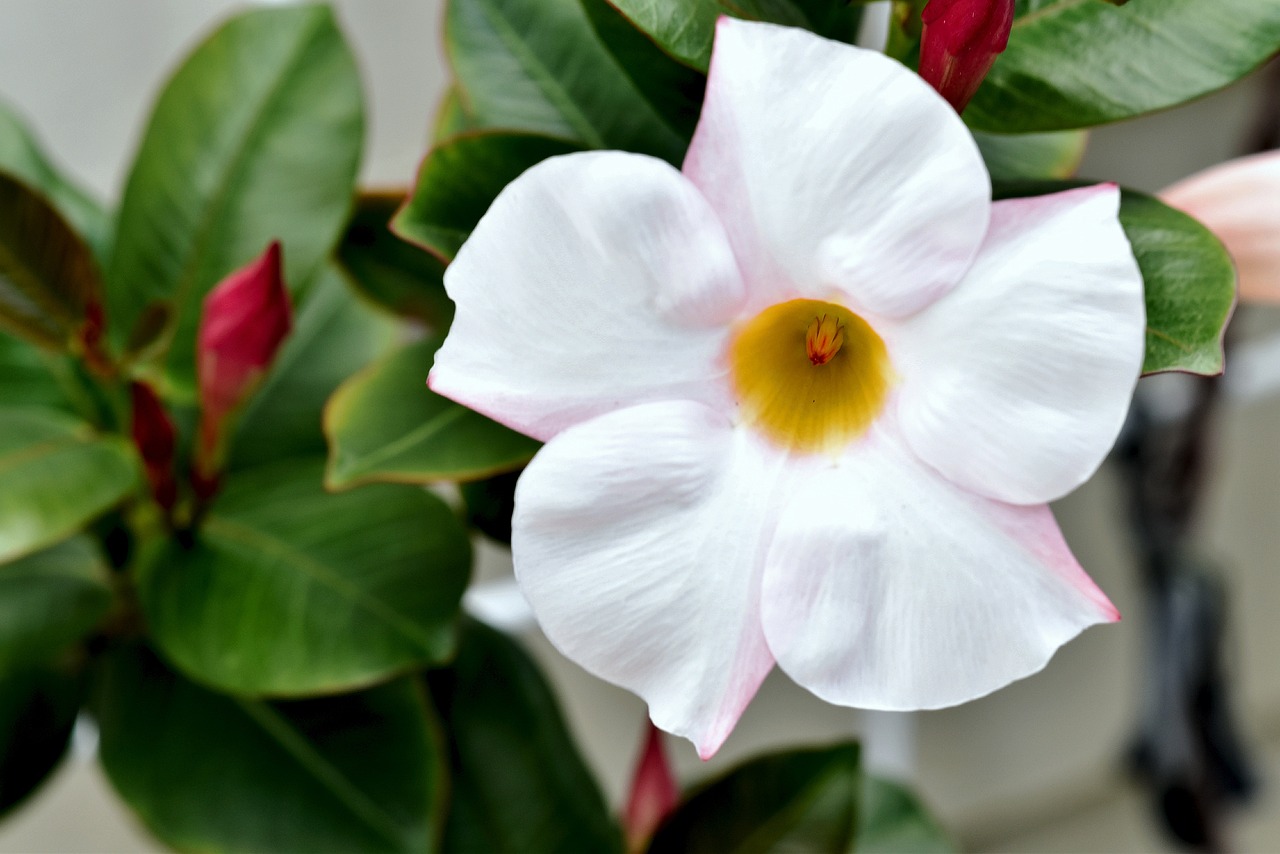
Mandevilla is a plant admired for its vivid blossoms and graceful climbing form. I appreciate its preference for warm climates, and it has become widely enjoyed in gardening and container planting.
In this article, I will introduce the essential information about Mandevilla, its cultural and historical background, as well as tips for cultivation.
Basic Information
- Scientific name: Mandevilla spp.
- Family: Apocynaceae
- Origin: Central and South America (Brazil, Argentina, Bolivia, etc.)
- Appearance: A climbing plant with glossy dark green leaves and large trumpet-shaped flowers. The blooms come in red, pink, white, and yellow.
- Blooming season: From spring to autumn, with flowers lasting for a long period. In warm climates, they can bloom throughout the year.
Cultural Significance Around the World
Mandevilla, with its showy flowers and climbing nature, has been cherished in many cultures as a symbol of tropical beauty.
In Central and South America, it grows naturally as part of the lush jungle flora, representing the richness of the tropics.
In Brazil and Argentina, its bright flowers enhance the cheerful atmosphere of gardens and parks, often associated with celebrations.
In Europe, since the 19th century, greenhouse cultivation made Mandevilla popular as an ornamental plant. In France and Italy, it is especially valued for decorating balconies and terraces, creating an elegant ambiance.
In the southern United States, Mandevilla is well-loved for bringing tropical charm. Many households use it to cover fences and arches, making it a key element in creating a resort-like garden.
Historical Background
The name Mandevilla comes from Henry Mandeville, a 19th-century British diplomat and plant enthusiast. He discovered the plant in South America and introduced it to Europe.
During the late 19th and early 20th centuries, European botanical gardens actively collected tropical plants, and Mandevilla became one of their highlights. With the progress of greenhouse cultivation, it soon spread across aristocratic gardens and conservatories in Europe.
By the 20th century, its popularity grew in the United States and Australia, where gardeners took advantage of its climbing nature. Today, numerous cultivars exist, offering a wide variety of colors and shapes.
Gardening Advice
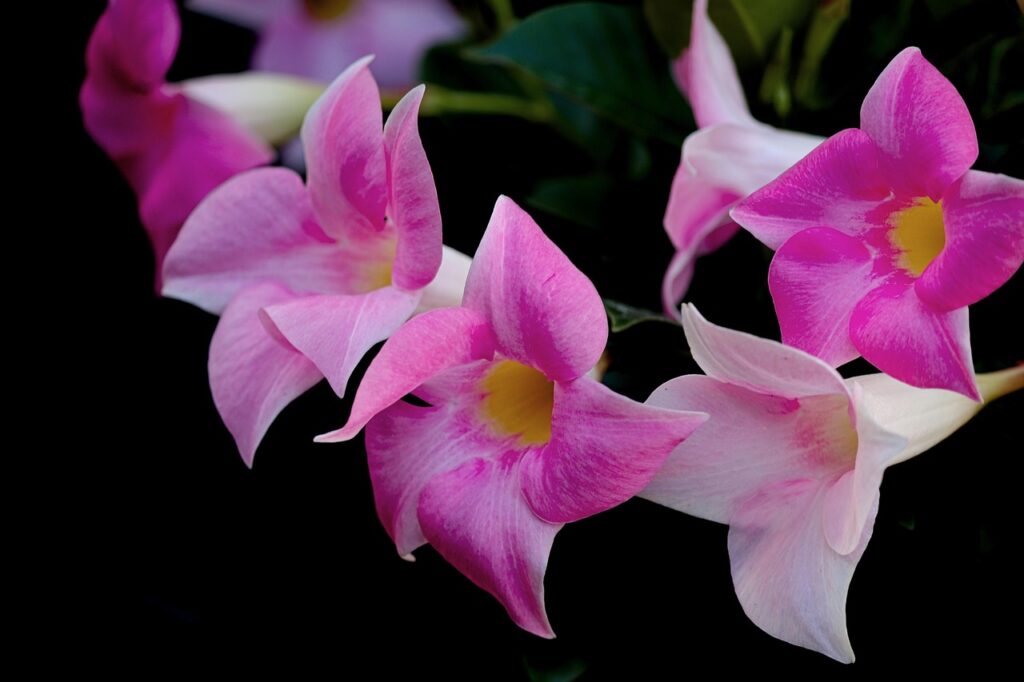
To grow Mandevilla successfully and enjoy its brilliant blossoms, proper care and environment are essential.
Sunlight
Prefers full sun for at least half a day. Partial shade in the afternoon helps protect from strong summer heat.
Watering
Water thoroughly when the soil surface dries. Keep the soil slightly moist during flowering. Reduce watering in winter.
Soil
Well-drained, organic-rich soil is ideal. Mixing pumice or leaf mold improves root development.
Fertilizer
Apply liquid fertilizer twice a month during the growing season. Phosphorus-rich fertilizer promotes blooming.
Pruning
Trim excessive growth to maintain shape. Light pruning before winter dormancy ensures better growth in the following year.
Cold Tolerance
Sensitive to cold. When temperatures drop below 10°C (50°F), bring the plant indoors or protect it from frost.
Conclusion
Mandevilla is a striking climbing plant, admired for its vivid flowers and lush foliage.
It has been treasured in South America as a symbol of tropical beauty and embraced in Europe as an elegant garden plant.
Introduced to Europe in the 19th century by Henry Mandeville, it quickly spread worldwide with the advancement of greenhouse cultivation.
With its long blooming period and decorative appeal, Mandevilla is an excellent choice for gardens and balconies when given the right sunlight and care.


